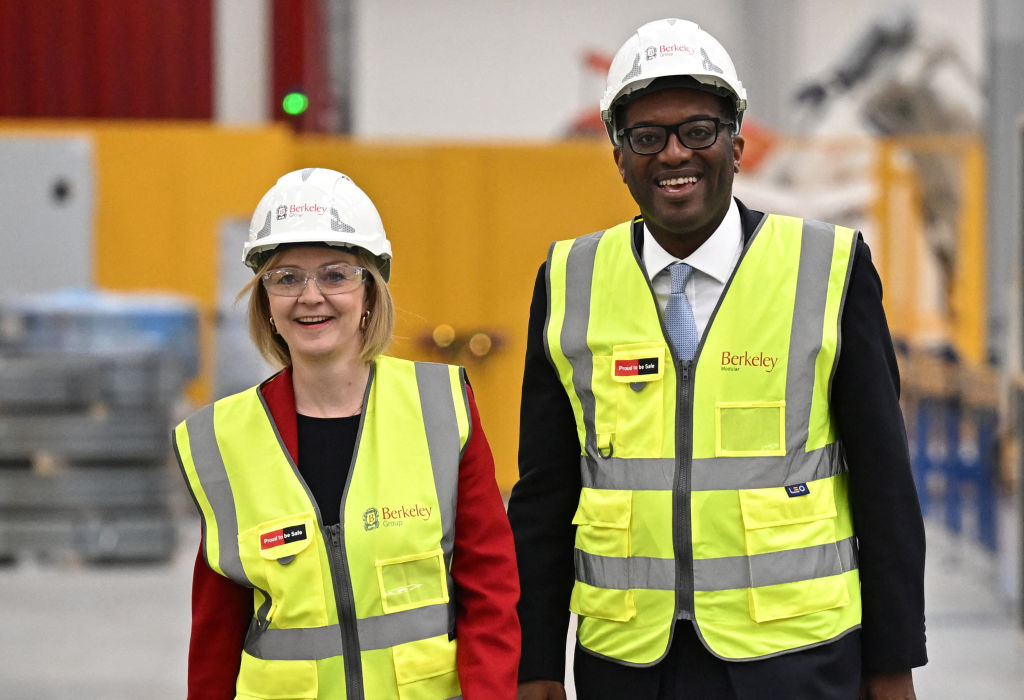Kwasi’s gamble to settle the score on the size of the state

Whenever a country claws back regulations or dramatically cuts taxes, you could easily start a drinking game around how many times Bill Clinton’s “the era of big government is over” idiom is regurgitated.
Kwasi Kwarteng’s non-budget budget filled up the country’s back pockets with £45bn worth of tax cuts and will be no exception to the rule.
But the qualifier to Clinton’s first refrain is more telling. As the US rode the wave of five consecutive years of economic growth, the President said at his state of the union address, “we cannot go back to the time when our citizens were left to fend for themselves.”
When Jeremy Corbyn was elected leader of the Labour Party in 2015 and promised not to strengthen the backbone of the state, but to put it on steroids, he set the groundwork for the battle lines we are now fighting.
As we remember, all too well, he lost, resoundingly to Boris Johnson. Whether it was the implausibility of his manifesto, the toxicity of his brand or the allure of the balloon of blonde hair and bluff that was Boris Johnson, for a moment at least the hand of the state was batted away.
Then the pandemic hit. And we not just became accustomed to huge state spending, we demanded it. Many of the schemes Rishi Sunak put in place during lockdowns would have made Corbyn quake with jealousy. At the time, they were needed.
Kwasi Kwarteng and Liz Truss’ incredible plan for the economy was quickly met with derision.
There were no costings. The only help for the poorest was a gamble on what is either called “trickle down economics” or “supply-side reform”, depending on your political persuasion. The pound quickly plummeted. Politicians and pundits quickly scrambled back to their dividing lines of “tax cuts for the rich” or “go for growth”.
What is perhaps uniquely interesting is the combination of a strategy tearing up the status quo of the last few years with the energy price cap freeze.
Neither Kwarteng or Truss are fools, even if they are gamblers. They know we cannot go back to the time when citizens were left to fend for
themselves. The expectation now is that government will step in to help when help is needed. And that’s what they’ve done with a plan which, at least for the first six months, is expected to cost £60bn.
They have inserted themselves into the energy market in a way which, for most die-hard free marketeers, is unfathomable. Yet at the same time, they have waved a white flag to the backbenches of the Tory party who have long grumbled about the place of the state in Britain.
There are breathtaking risks, the biggest of course is inflation. While the energy price cap will bring down headline inflation by somewhere in the realm of 4 to 5 per cent, injecting more money into the economy could easily push up domestic inflation.
This is what the Bank of England is worried about. At the Monetary Policy Committee last week, they said, the cap makes it less likely household spending will be depressed and “this would add to inflationary pressures in the medium term.”
But as much as it is a plan for the economy, it is also a politically charged fiscal programme to claw back the expectations we put on the state.
In other words, it’s a reset button.
Often, in an attempt to find balance, you have to go too far in one direction to know when to pull back.
For the better part of a decade, we have been fighting over the rule of the state. The pandemic tipped the scales so far in favour of it, the calls for “more government support” became a constant drumbeat in the background of British politics.
Truss and Kwarteng know they cannot leave households, businesses and indeed the economy out in the cold as the energy crisis comes to a head. But elsewhere, they said: no more, the taps are off, it’s up to you.
